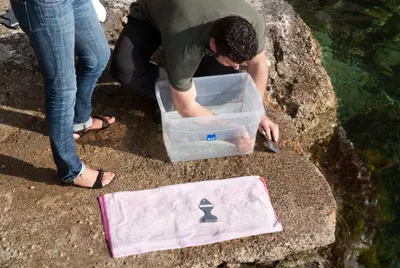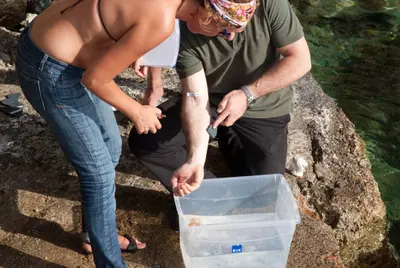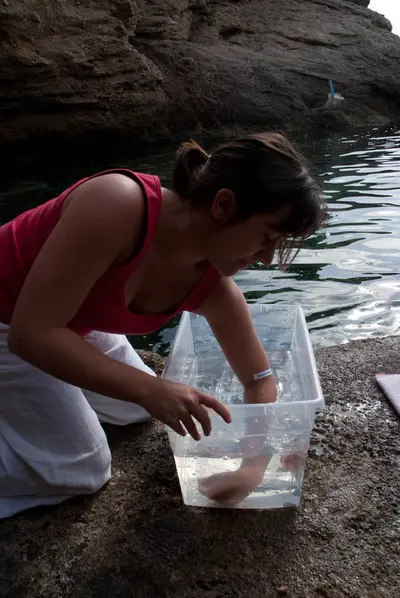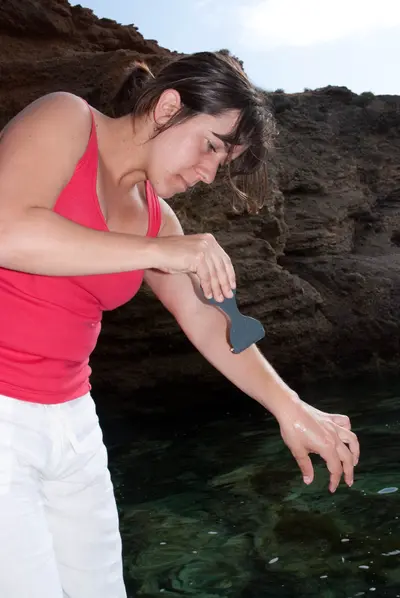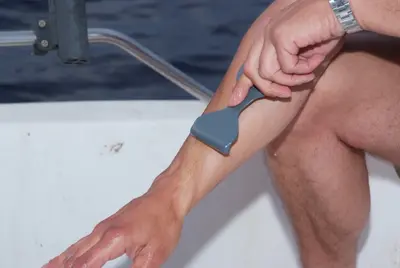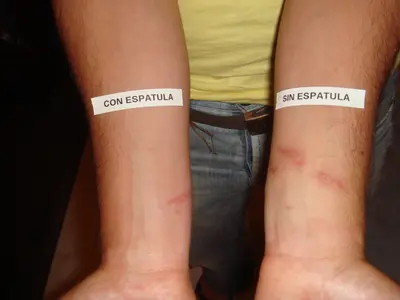
Clinical study
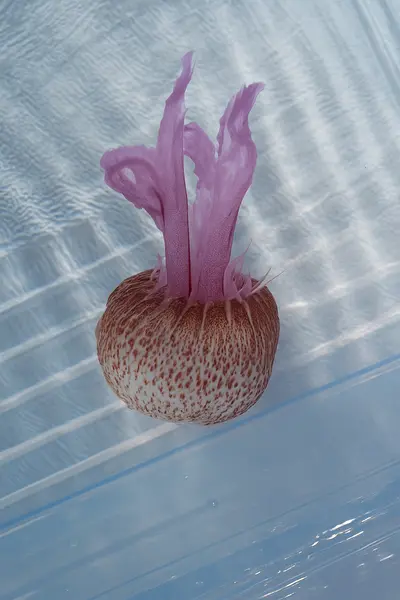
MEDUCLEAN: Scientific Effectiveness
In 2009, a rigorous dermatological test was conducted on the shores of Ibiza to scientifically evaluate the effectiveness of the MEDUCLEAN device in treating jellyfish stings.
This study was led by the renowned Dr. Javier Noguera Tusquets, head of the Dermatology Department at Epidermos (Institut of Dermocosmetics), with the valuable collaboration of nursing assistant Isabela Martínez Quiroga, providing a solid professional foundation to the research.
During the clinical trial, volunteers were subjected to controlled stings from the Pelagia Noctiluca jellyfish, a common and highly stinging species of the Mediterranean Sea. The comparative procedure of the study demonstrated the superior action of MEDUCLEAN: while the area treated with the MEDUCLEAN scraper (to remove the filaments without spreading them, followed by a wash with seawater) showed a significant reduction in symptoms, the untreated area (only washed with seawater after a new sting) still exhibited inflammation and discomfort.

Procedure of the clinical study
To evaluate the effectiveness of MEDUCLEAN in the treatment of jellyfish stings, the clinical trial was structured in two clearly differentiated phases. In the first phase, immediately after being stung by the Pelagia noctiluca jellyfish, volunteers used the MEDUCLEAN scraper to carefully remove the stinging filaments adhered to the skin, making a dragging motion that prevented their spread and the subsequent release of more toxins. Then, the affected area was rinsed with plenty of seawater, following the usual recommendations.
The second phase of the study involved inducing a new controlled sting on the opposite limb of each volunteer. However, on this occasion, no specific treatment with MEDUCLEAN was applied, and the intervention was limited to a simple wash with seawater. This direct comparative methodology allowed for the observation and analysis of the different progression of jellyfish sting lesions between those treated with the mechanical action of MEDUCLEAN and those that only received a superficial wash, thus establishing the basis for determining the true effectiveness of the device.
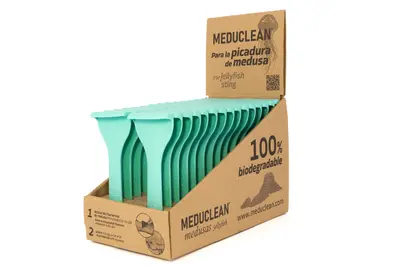
Effective and Safe Solution
The dermatological test demonstrated the superior effectiveness of MEDUCLEAN in relieving jellyfish stings, significantly reducing symptoms such as inflammation, itching, and stinging compared to the absence of treatment.
Safe, easy to use, and with an excellent quality-price ratio, MEDUCLEAN emerges as the optimal and first-choice solution for effectively treating jellyfish stings, providing rapid relief and contributing to better recovery of the affected skin.
